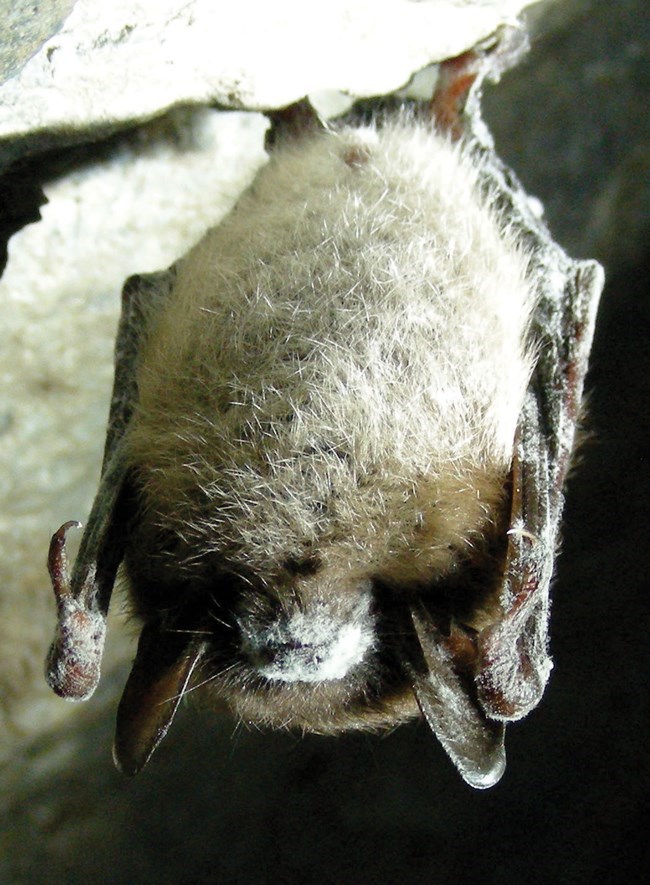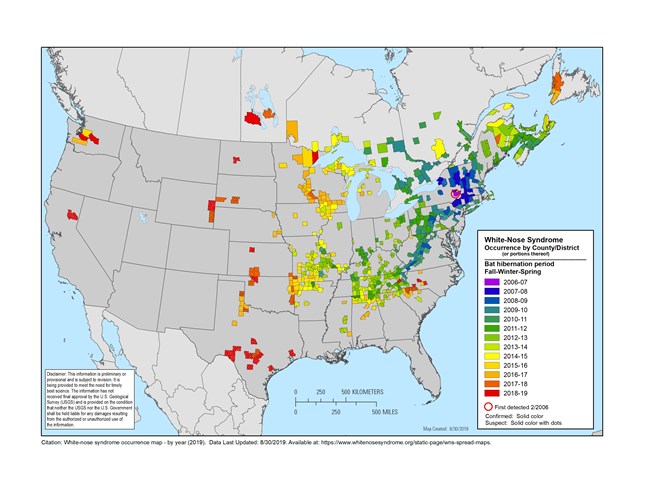
NPS Photo White-nose syndrome (WNS) is a devasting fungal wildlife disease that has killed over 6 million bats since it first appeared in the United States in 2006. WNS is caused by a fungus Pseudogymnoascus destructans (formerly Geomyces destructans) that thrives in the cold, dark, damp environments where bats hibernate. 
Map last updated: August 2019 https://www.whitenosesyndrome.org/where-is-wns Slowing the SpreadThe first documented case of White-Nose Syndrome was confirmed in central New York in 2006. Since then, it has spread across the United States and Canada and reached the west coast in 2016. Although most commonly spread by bat-to-bat contact, fungal spores from P. destructans can last a long time on surfaces such as outdoor gear and clothing and can be transported from one cave to another without anyone knowing. Decontamination remains an important practice that can help slow its spread. Thoroughly Clean and Decontaminate Your Shoes
Clean Your Clothing as Normal
Decontaminate All Caving Gear
More detailed decontamination protocols ensure we all keep cave ecosystems safe and healthy for their residents and for visiting cavers. |
Last updated: May 6, 2025
